October 2025
Democracy Is Not a Spectator Sport
 Kerry Stackpole, FASAE, CAE, PMI CEO/Executive Director
Kerry Stackpole, FASAE, CAE, PMI CEO/Executive Director
A few weeks ago, I had the privilege of standing shoulder to shoulder with an amazing group of Plumbing Manufacturers International members representing the plumbing fixtures and fittings manufacturing industry in our nation’s capital. Ours is a sector that doesn’t often make headlines—but every day, in every home, school and business, our work and innovative products ensure safe water and reliable sanitation that improve lives. We make things that matter.
What we help build outside of our companies is as important as what we build inside. What we build outside is our engagement in the democratic process. Our political advocacy is essential because democracy is more than a spectator sport.
Now, let’s be honest. It’s easy to think of democracy as something that happens “over there,” in Washington, in state capitols, or on election night television broadcasts. We watch the debates, we read the headlines, maybe we shake our heads—and then we get back to the pressing business of running our companies.
But the truth is: members of Congress and their staffs can’t possibly know the details of every industry. They depend on us to educate them—to put a face and a voice to the policies they’re voting on.
Why advocacy matters to our Industry and our nation
Think for a moment about the challenges our industry is facing. Tariffs and trade disruptions that drive up costs. Potentially new water and energy standards that directly affect how we design and manufacture our products. Workforce shortages that make it harder to fill jobs. Global competitors that test our resilience every single day.
Every one of those issues is tied to policy. And every one of those issues is decided by people who need to hear from us. If we don’t speak up, decisions get made without the benefit of our expertise—and often without a full understanding of how those decisions play out in the real world.
The great thing about democracy is you don’t have to be a policy expert. You are the expert on your business, your fellow employees, and your customers. Your experience in the real world and the impact of tariffs, regulations, and infrastructure investment on your company is the headline. How your company is innovating to use water more efficiently, reduce waste, and help build a more sustainable future is the story. PMI’s voice grows stronger by the day, especially when you are available to tell your story.
Advocacy gives us a seat at the table. It ensures your voice is heard alongside others. It helps lawmakers and regulators see the bigger picture—how what they do in Washington or in a statehouse affects not only companies like ours, but the workers we employ, the communities we support, and the families who depend on safe, reliable plumbing every day.
But advocacy isn’t only about defense. It’s not only about stopping bad ideas. It’s also about shaping the future. When we push for investments in water infrastructure, or support training programs for skilled trades, or argue for balanced regulations that encourage innovation—we are building the conditions for long-term growth. We’re not only protecting our industry. We’re strengthening the economy, the environment, and the well-being of every American family.
Participating in democracy is a privilege
And here’s something I think we all need to keep in mind: we are privileged to be able to do this. Around the world, many industries do not have the freedom to challenge, to educate, or to persuade policymakers. In the United States, democracy gives us that opportunity—and with it, a responsibility.
Democracy only works if people step forward. It only thrives when citizens, organizations and industries like ours engage. That means meeting with members of Congress. Sharing our stories and data. Inviting them to tour our manufacturing plants. Explaining how a new regulation affects innovation, or how a trade policy affects jobs in our factories.
So, my message is simple: commit to being a participant, not a spectator. Let’s show lawmakers the vital role our industry plays in public health, sustainability, and American manufacturing. Let’s practice democracy by speaking up, engaging, and leading.
We know how to build great products. Now let’s also help build the policies that ensure our industry, our workers, and our nation continue to thrive.
PMI Advocates for Pro-Manufacturing Policies at D.C. Fly-In
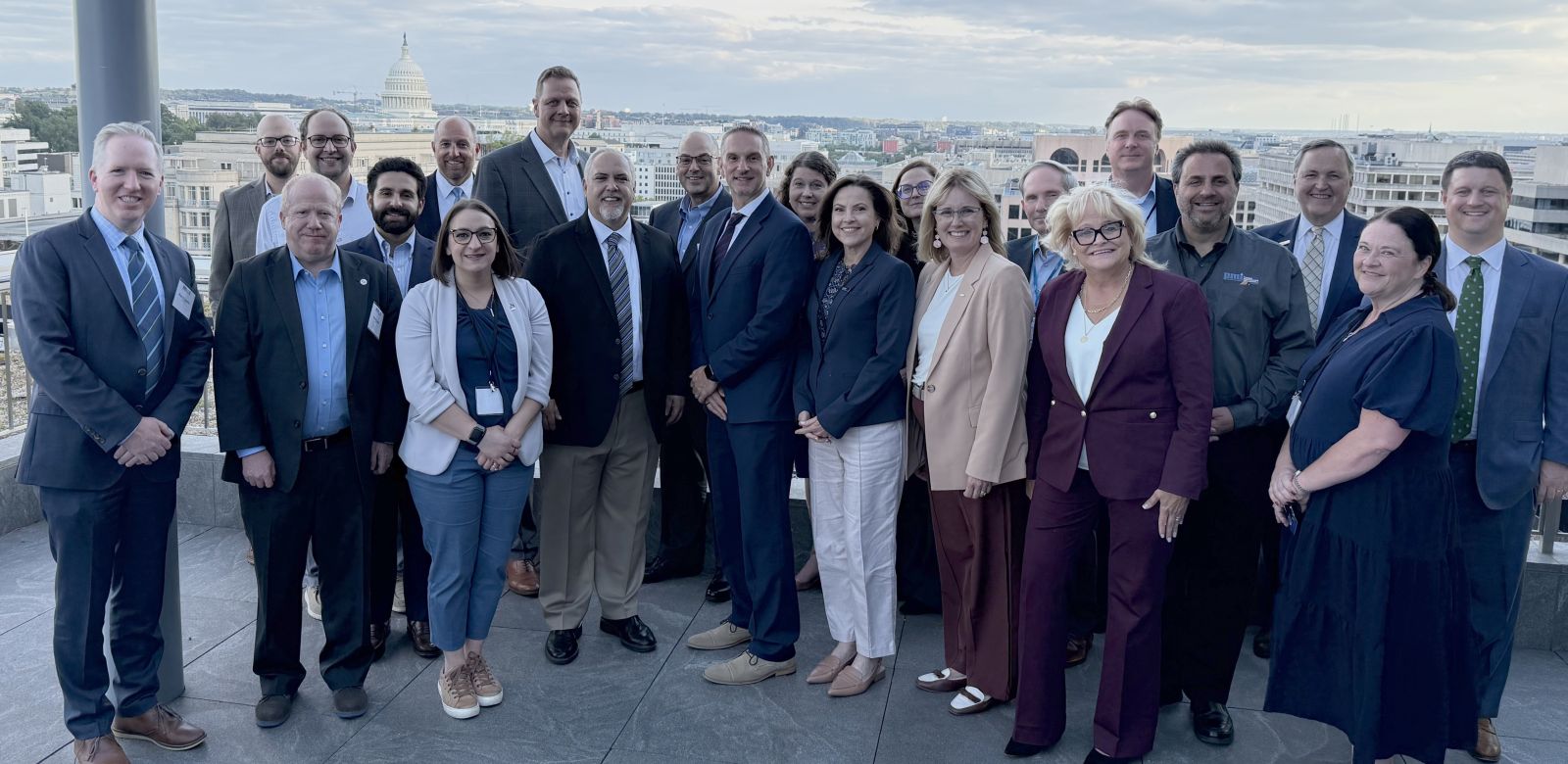 By Judy Wohlt and Ray Valek, PMI Communications Team, Valek and Co.
By Judy Wohlt and Ray Valek, PMI Communications Team, Valek and Co.
Plumbing Manufacturers International members took to Capitol Hill to educate Congress on critical industry issues related to appliance-efficiency standards, water infrastructure, workforce gaps, housing affordability, and tariffs at the Sept. 9-10 PMI Washington Legislative Forum and Fly-In. The large PMI contingent left the event optimistic that Congress will continue to fund many programs important to PMI members in the fiscal year (FY) 2026 budget—particularly WaterSense.
Central to the forum is educating lawmakers about the investments plumbing manufacturers make in communities, how they support the economy through job creation, and how they make and certify products for safety, said PMI’s government affairs consultant Stephanie Salmon. The PMI group presented crucial details on how government policies and legislation can help build a robust plumbing manufacturing industry—or cause challenges.
PMI CEO/Executive Director Kerry Stackpole described the overall experience as positive with “receptive audiences” on Capitol Hill. “Members had lots of good meetings with different representatives from their districts. Using a targeted approach, every PMI member who attended was able to see a policymaker who meant something to the location of their company,” he emphasized.
Stackpole noted that Salmon helped members prepare for their meetings with a webinar, detailed issues briefs, and onsite presentations by various economic, government and business experts. PMI member companies that participated in the event included BLANCO, Delta Faucet Company and parent company Masco, GF Building Flow Solutions, IAPMO, International Code Council, Kohler, LSP Products, NSF, TOTO USA, and Viega.
Advocating for WaterSense, water infrastructure funding
The PMI contingent urged lawmakers to maintain level funding for critical water infrastructure programs, recommending lawmakers prioritize appropriations for WaterSense; the Clean Water and Drinking Water State Revolving Funds, which are used by municipalities for public drinking water, wastewater, and stormwater projects; and the Water Infrastructure Finance and Innovation Act, which provides low-cost federal loans to water projects of regional and national significance. While customer rates cover many of the costs of providing water services in the U.S., federal funding and financing play a critical role in helping utilities upgrade and expand their water infrastructure, Salmon said.
Presenting a strong case to maintain current faucet standards
Rep. August Pfluger (R-Texas), member of the House Energy and Commerce Committee, spoke at the event’s breakfast on Sept. 10. The committee is responsible for oversight of the Department of Energy and for legislation impacting water and energy efficiency—major concerns for PMI members.
The breakfast gave PMI members the opportunity to share with him several important reasons why existing faucet standards should be maintained. To Pfluger and other legislative staff on Capitol Hill, PMI members emphasized how the DOE’s proposal to increase maximum flow rates will flood the American market with imports that undercut domestic producers and will negatively impact U.S. manufacturers while offering no significant enhancement to the customer experience.
Pfluger provided an overview indicating that the House seems to be more interested in revising energy-efficiency standards for gas and electric appliances rather than standards for faucets, showerheads and toilets, Stackpole noted.
Still, outside of Congress, the DOE has proposed a regulatory change that would effectively increase the current federal maximum faucet flow rate from 2.2 gallons per minute to 2.5 gpm. PMI has shared comments with the DOE opposing this change and noted how plumbing manufacturers would need a minimum three-to-five-year lead time to reengineer and develop a faucet to meet a new flow rate, if approved.
PMI also underscored how the DOE would be violating the anti-backsliding provision of the Energy Policy and Conservation Act. EPCA explicitly bars the weakening or removal of standards without a new, statutorily authorized rulemaking—yet, the faucet proposal would undo standards already in force.
Rep. Rick Allen (R-Georgia) recently introduced legislation, titled “Don’t Mess with My Home Appliances Act” (H.R. 4626), that seeks to overhaul the framework governing efficiency standards and will be part of an EPCA reform package. PMI is reviewing the provisions to determine if they allow for future changes to flow rates and include adequate preparation time for U.S. manufacturers to change their products, Salmon noted. PMI also supports a legislative process to consider how EPCA can be improved to preserve consumer choice and affordability for appliances.
Making housing more affordable
The PMI group expressed how the association supports efforts by Congress and the Trump administration to address housing affordability and supply, which involves plumbing fixtures and fittings. Lawmakers can help boost housing production by breaking down impediments to new home and apartment construction such as excessive regulations, building material supply chain bottlenecks, and a chronic shortage of skilled labor.
PMI shared how it supports passage of “The Renewing Opportunity in the American Dream,” or ROAD to Housing Act of 2025 (S. 2651), a comprehensive, bipartisan housing reform package. The law aims to boost the country’s housing supply, improve affordability, expand access to homeownership, and increase the oversight and efficiency of federal regulations and housing programs. The bill would establish faster project approvals; support converting underused commercial, office or industrial properties into affordable housing; and create $1 billion in funding to go toward infrastructure such as water, sewer systems, and roads needed to support new housing.
Tariffs reshape homebuilding landscape
Because of new tariffs and constantly shifting tariff policy, the construction and plumbing manufacturing sectors are experiencing higher material costs, modified project timelines, and increased uncertainty within supply chains. PMI discussed these consequences, along with policy recommendations including tariff relief for building products, during meetings with lawmakers and their staff.
Alex Strong, National Association of Home Builders government affairs, shared tips on how PMI members could communicate about critical housing-related issues right before they met with their lawmakers on Capitol Hill. Builder sentiment has fallen, due to tariff and housing cost concerns revealed in an NAHB survey, he emphasized. Builders are worried about the cost and availability of labor—with open construction positions totaling 246,000 in June—and rising building material prices, which have increased 7% from 2024 to 2025, remaining at an all-time high, Strong explained.
The NAHB, which advocates for reduced tariffs, estimates that the Trump administration’s proposed tariffs on building materials, appliances and products will disrupt supply chains and add an average of $10,900 to the cost of each new home.
Closing workforce gaps
To ease critical labor shortages in the construction and manufacturing sectors, PMI recommends Congress pass the “Creating Opportunities for New Skills Training at Rural and Underserved Colleges and Trade Schools (CONSTRUCTS) Act (H.R. 1055/S. 189).
This bipartisan legislation would expand access to good-paying, high-demand jobs for students; address the shortage of skilled construction workers and other essential trades; and allow developers to build more homes and buildings. It would also rebuild vocational education in high schools and trade schools and expand apprenticeships.
As a follow-up to the fly-in, PMI members are encouraged to host their lawmakers at their facilities for plant tours. PMI is available to assist members in setting up these tours. PMI members can view legislative issue briefs provided during the forum on the PMI website (tinyurl.com/322x6j3z).
Learn, Network and Have Fun at PMI25
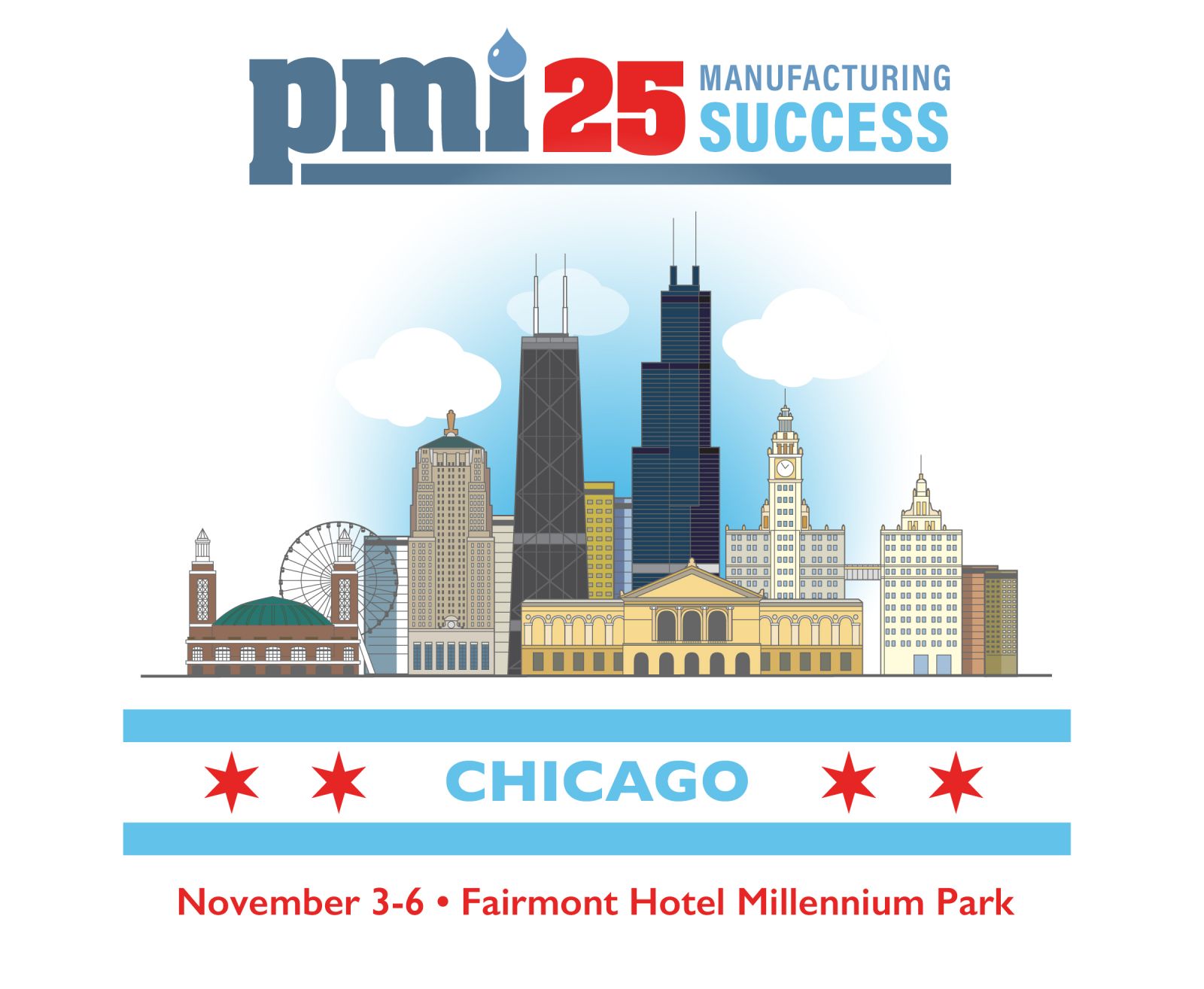 By Judy Wohlt, PMI Communications Team, Valek and Co.
By Judy Wohlt, PMI Communications Team, Valek and Co.
Ready to expand your mind, network with colleagues, and immerse yourself in vibrant art and fun activities—including a live glass-blowing demonstration—in the Windy City? Be sure to attend the PMI25 Manufacturing Success Conference, Nov. 3-6 in Chicago. Sponsorship opportunities remain available, too.
“We’re excited to be bringing all things Chicago into the conference this year, from the city’s magnificent skyline to its famous pizza and music,” said Jodi Stuhrberg, Plumbing Manufacturers International director of programs and administration. “We selected top-notch speakers to share their insights on the industry’s important trends, innovations and issues, and will provide the always popular time for networking.”
Don’t miss a special “Industry Leaders Panel Discussion” featuring top plumbing manufacturing leaders Erin Beyer, senior vice president, product, Delta Faucet Company; Bob Downie, president and CEO, Duravit America; Carmen Fiordirosa, president, Globe Union North America Group; and Shawn Oldenhoff, senior vice president, category management, kitchen and bath Americas, Kohler. They will provide their perspectives on the current state of the plumbing manufacturing industry.
Enjoy an exquisite glass-blowing demo and time to mingle with your peers
As part of a reception and dinner on Nov. 4, PMI25 attendees will be treated to a demonstration of talented artists working with 2,000-degree molten glass that will be transformed into stunning works of art.
Ignite Glass Studios, a distinctive space with large glass windows, will host the event, where guests will enjoy an entertaining dinner and night out with their peers with plenty of time to explore the gallery—filled with unique glass pieces in vibrant colors and curious shapes. The rooftop deck will be open for those who want to experience breathtaking views of the iconic Chicago skyline.
On Nov. 5, another lively dinner and reception will take place at the Fairmont Chicago, where attendees get extra time to network with peers and industry partners, hear music rooted in the city’s history, and enjoy renowned Chicago-style cuisine.
Boost your brand with a PMI25 sponsorship
Is your company offering innovative new products or services? Are you looking to broaden your audience reach? A PMI25 Platinum, Gold, Silver, or Event Sponsorship will help you spread the word and get noticed.
Follow the lead set by International Code Council/ICC Evaluation Service and IAPMO, which have secured Gold Sponsorships, and PHCP Pros, which has locked in a Silver Sponsorship. For their generosity, ICC/ICC-ES and IAPMO will receive two complimentary registrations, while PHCP Pros will get one complimentary registration to PMI25. All will get the opportunity to show their video to meeting attendees while gaining visibility onsite during the conference and digitally via PMI email, publications, and social media.
New in 2025 is a hands-on, heart-driven activity in partnership with World Vision—an event sponsorship opportunity for one company only. During PMI25, attendees can assemble care kits for children, women and men in need. These kits will include essential items and handwritten messages of encouragement from PMI members. As the exclusive sponsor of this charitable event, your company’s logo will be featured on each card, showing every recipient and every participant that your organization stands for hope, compassion and leadership.
Past participants recommend attending this can’t-miss event
Many past conference attendees have said in survey comments that they find the PMI Manufacturing Success Conference valuable and inspiring.
When asked what they liked most about the PMI24 conference, one PMI member said: “It provides useful content and provides some topics out of the daily working routine, and great networking opportunities.” Another added: “Great education topics that relate directly to my work. Fantastic speakers and networking opportunities.”
One PMI member mentioned how the PMI team listens and makes tweaks for even better experiences. “All of the little adjustments you’ve been making and lessons learned over the years have been adding up to make this a very worthwhile conference… The execution of the whole event was strong. Compliments to those who make this happen, because you’re clearly committed to continuous improvement.”
Register for PMI25 today: (safeplumbing.org/pmi25).
Be a PMI sponsor: (tinyurl.com/msn2vwsx).
Make your room reservation by Oct. 12: (tinyurl.com/4d3w64ss).
Communication Expert Gives Tips To Think Fast, Talk Smart
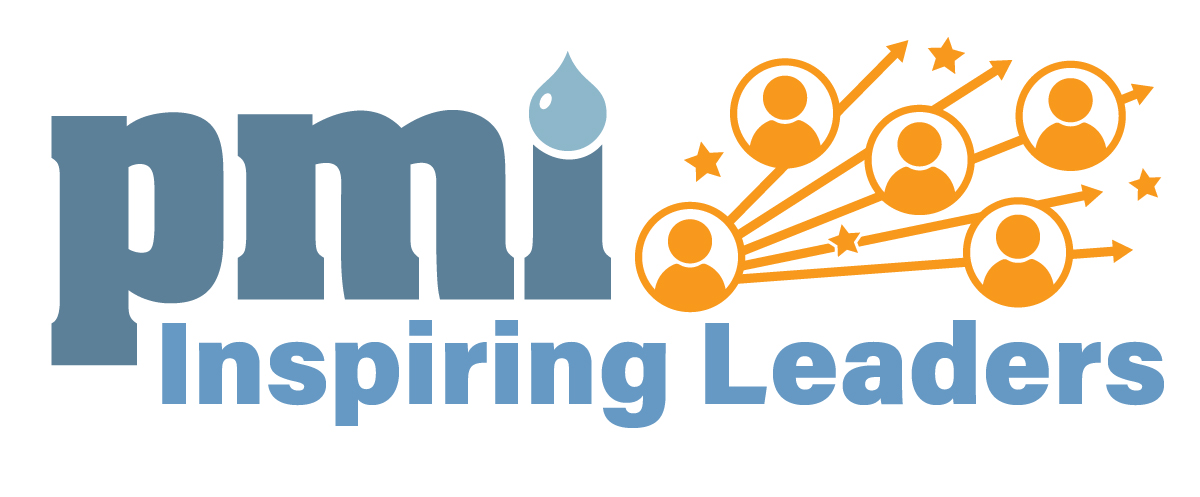 By Judy Wohlt, PMI Communications Team, Valek and Co.
By Judy Wohlt, PMI Communications Team, Valek and Co.
“I think all presentations and meetings should start like an action movie. I’m not saying jump out of a plane or crash a car. Simply ask a question, tell a story, give a provocative statistic, show a video clip, or take a poll,” Matt Abrahams suggested to a group of Plumbing Manufacturers International members at a recent PMI Inspiring Leaders Workshop.
Abrahams, a lecturer in organizational behavior at Stanford University’s Graduate School of Business, shared tips on crafting and delivering effective, memorable communication during his presentation, “Think Fast, Talk Smart: Effective Communication Skills.” He offered best practices and his model to “make your C.A.S.E.” which stands for: clear, accessible, supportive and engaging communications.
Clarify your audience and goal
“You need to think about your audience’s knowledge, attitudes, resistance points, and motivations. This leads you to create your goal,” Abrahams said. “What does my audience need to know? Are they in favor or not in favor of what you’re offering?” This is the “clear” part of making your C.A.S.E.
Often, people create one deck, story or pitch and deliver it to various groups rather than tailor it. “You have to be curious enough about your audience to understand what they need from you and then empathetic enough to change your content accordingly,” he added.
Focus your communication by establishing a goal and asking what you want the audience to know, feel and do. Tapping into emotions helps people remember what you said and motivates them to act on the information you share, he explained. “Do you want your audience excited or concerned? Do you want them to feel validated or fear they’re missing out on something—or just be confident?”
Structure sets expectations
Making communication accessible means using a structure—or logical connection of ideas with a beginning, middle and end—that helps set your audience’s expectations and remember what you said, Abrahams explained.
He shared three proven structures: 1) problem, solution, benefit; 2) What? So what? Now what?; and 3) past, present and future. The first starts with a problem or opportunity, moves to a solution, and offers a benefit. Most television ads follow this type of communication, he said.
Abrahams described the “What? So what? Now what?” structure as his favorite because it successfully informs people about how your information is relevant to them. For example, your manager asks you to give an update (what), you explain why it’s important—perhaps it’s related to a specific key performance indicator goal (so what), and you describe what’s in the way that needs to be cleared (now what).
Every major company has had to use the more inspirational structure of “past, present and future” to explain the impact of artificial intelligence on their business, Abrahams noted. “A senior leader comes out and says, ‘Here’s how we used to do it, here’s how we do it today, and here’s how AI will help us do it in the future,’” he added.
Support your claims with testimonials, examples and data
Your claims need to be supported (the “s” in C.A.S.E.) with a variety of testimonials, examples and data, Abrahams emphasized. “This is how you bring emotion to help people understand what you’re telling them,” he added.
Using testimonials from a third voice or party help support what you’re advocating. Examples are stories you tell, anecdotes that support your point, or demonstrations you make—such as showing a product that can solve an issue, Abrahams explained.
Data are important but be sure to provide context, so your audience understands the numbers you share, he emphasized.
Tips for successful engagement
He shared four ways to engage an audience: physically, cognitively, with inclusive language, and by referring to common ground.
For physical engagement, ask people to raise their hands after you ask a question or use reaction buttons in a Zoom meeting. Ask questions for cognitive engagement, Abrahams suggested, and embrace inclusive language by using people’s names and the word “you,” which makes people pay attention.
Referring to common ground by using shared experiences is a great way to connect with people. This is why you share the same stories and jokes repeatedly with your friends and family, he noted.
PMI members can view several resources Abrahams shared for more communication tips at the website’s webinars/video page under workforce/professional development: safeplumbing.org/members/webinars-videos.
Learning How Codes, Standards and Regulations Interrelate
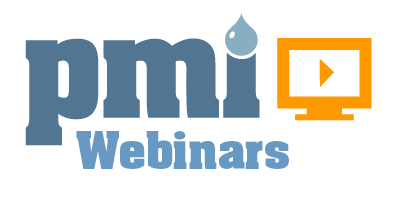 By Judy Wohlt, PMI Communications Team, Valek and Co.
By Judy Wohlt, PMI Communications Team, Valek and Co.
A group of Plumbing Manufacturers International members gained a better understanding of how codes, standards, legislation, and regulations form the foundation of product safety and performance during the Sept. 23 PMI webinar, “From Code to Certification: A Foundational Guide to Plumbing Product Manufacturing Compliance.”
Led by PMI Technical Director Kyle Thompson, the webinar also highlighted the role major third-party certification agencies play, the most influential codes and standards, and PMI’s role in monitoring and engaging PMI members in regulatory and legislative developments.
He noted how PMI participates in code and standard development committees, monitors regulatory and legislative proposals at both state and federal levels, shares updates and insights with PMI members, and facilitates industry alignment and consensus.
Model plumbing codes protect public health and safety
Model plumbing codes establish minimum requirements to design, install and inspect plumbing systems to ensure public health and safety, Thompson explained. These codes, developed through a consensus process with input from industry experts including plumbing manufacturers, serve as the basis for many state and local plumbing codes.
The two most common model plumbing codes followed in the United States are the Uniform Plumbing Code (UPC), developed by PMI member IAPMO, and International Plumbing Code (IPC), developed by PMI member International Code Council (ICC). While states typically adopt one of the two codes, counties, cities and townships may alter them to reflect local laws, conditions or priorities, causing local variations.
Third-party certification, required in most U.S. plumbing codes, ensures products meet referenced standards and enables inspectors to verify compliance in the field, he added.
Standards focus on product performance and design
Plumbing standards establish performance and design requirements and typically focus on a specific plumbing product or product category, such as faucets, drains or backflow preventers, he emphasized. Standards also define testing methods and material specifications, and ensure plumbing fixtures and fittings meet established quality and reliability expectations.
Codes typically incorporate standards to establish significant technical requirements for a product, Thompson shared. “I should be able to pull a certified product off the store shelf and take it to a test lab or a third-party certifier and ask them to evaluate the product to its applicable standard and code. And that product should pass,” he stated.
Standards are often developed through a consensus process by standards development organizations such as PMI members IAPMO, ICC-Evaluation Service, CSA Group Testing & Certification, NSF and UL Solutions. Unless explicitly referenced in a code or directly adopted through regulation, standards remain voluntary, Thompson noted.
Some of the most frequently used plumbing product standards have been harmonized globally, including NSF/ANSI/CAN 14, Plastics Piping System Components and Related Materials; and NSF/ANSI/CAN 61, Drinking Water System Components – Health Effects. PMI promotes harmonized global standards—collaborating with sister organization Canadian Institute of Plumbing & Heating—to reduce repetitive testing and listing costs and increase efficiency for North American manufacturers, Thompson emphasized.
States often tweak federal regulations, causing variations
Thompson discussed two federal regulations that affect plumbing products—the Energy Policy and Conservation Act (EPCA) and Safe Drinking Water Act (SDWA)—as well as the Environmental Protection Agency’s WaterSense Program, which is voluntary.
The EPCA covers the Department of Energy’s efficiency standards and test procedures, which were amended in 1992 to establish national water efficiency standards for plumbing fixtures and fittings. The SDWA led to the National Primary Drinking Water Regulations, which were established by the EPA to regulate contaminants such as lead in public water systems, he reported. As a component of the SDWA, the Lead and Copper Rule provides the specific regulations for public water systems to reduce lead and copper in the water supply.
States often make federal regulations more stringent, resulting in additional variations plumbing manufacturers must follow. For example, California has lowered flow rates on kitchen and bathroom faucets below federal regulations and imposed stricter chemical disclosure rules on PFAS substances in products.
PMI represents members’ interests by participating in public comment periods for state and federal regulations. “We have the expertise and the knowledge base, so it’s important to have a seat at the table,” he said.
PMI members can view Thompson’s presentation and slides under Technical/Regulatory” (tinyurl.com/598kjay2).
Mike Johnson Receives Paul Patton Award
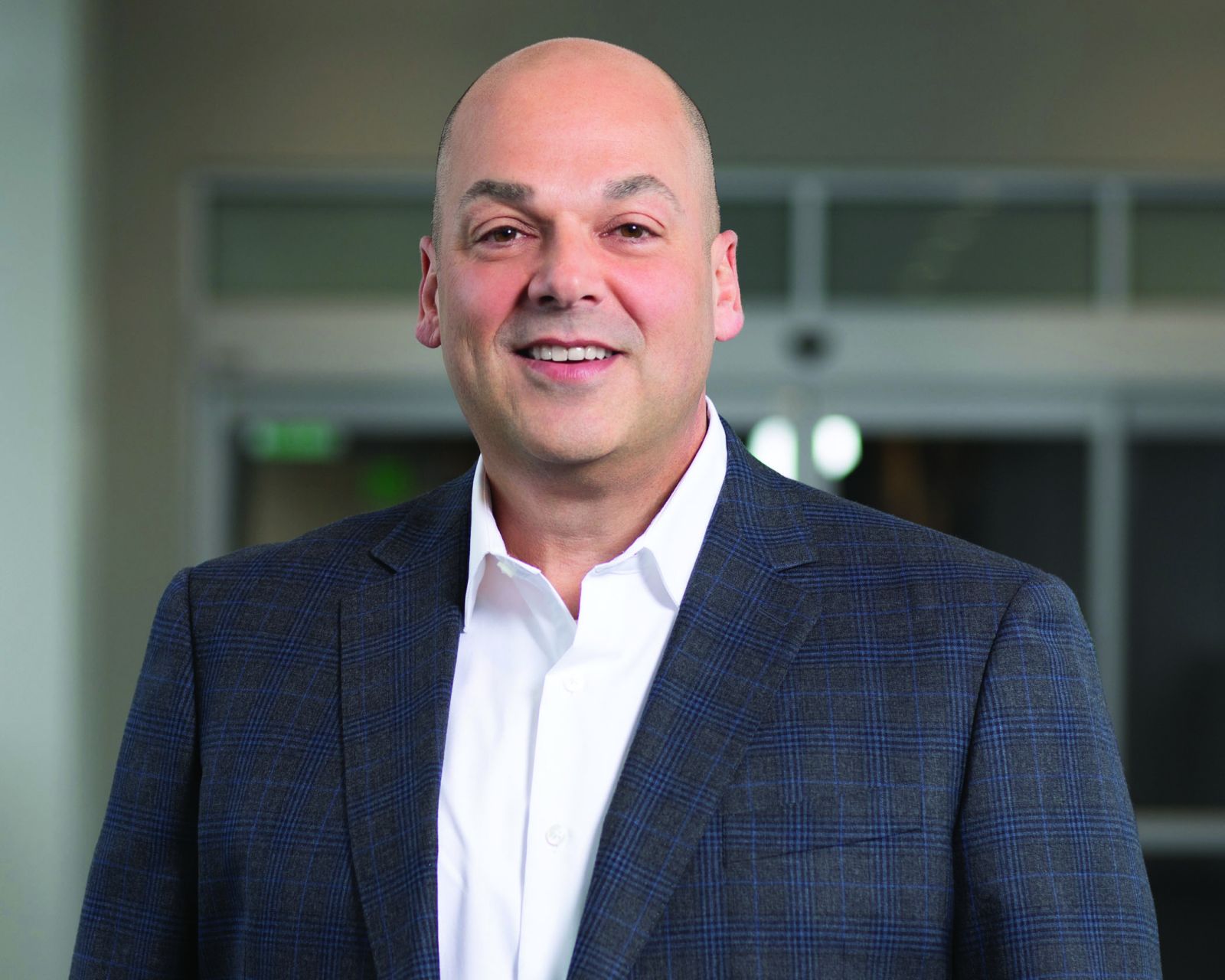 Mike Johnson of Delta Faucet Company has been selected as the 2025 recipient of the Paul Patton PMI Manufacturing Success Award. The company’s manager of product compliance and regulatory affairs, Johnson is also the co-chair of PMI’s Advocacy/Government Affairs Committee.
Mike Johnson of Delta Faucet Company has been selected as the 2025 recipient of the Paul Patton PMI Manufacturing Success Award. The company’s manager of product compliance and regulatory affairs, Johnson is also the co-chair of PMI’s Advocacy/Government Affairs Committee.
According to the nomination form submitted by Delta’s Bob Neff, PMI Board of Directors vice president, “Mike is at the forefront of all aspects of ensuring compliant and safe products are offered in the market and does an excellent job of contributing his experience and expertise to PMI and disseminating new and important information from PMI to stakeholders at Delta.”
Active with PMI since 2020, Johnson has been a participant in both the PMI California and Washington Legislative Forums, PMI Inspiring Leaders Program, PMI Manufacturing Success Conference, and PMI Advocacy/Government Affairs Committee meetings.
Johnson will receive complimentary registration to the PMI25 conference and Inspiring Leaders Program and will be recognized at the meeting.
